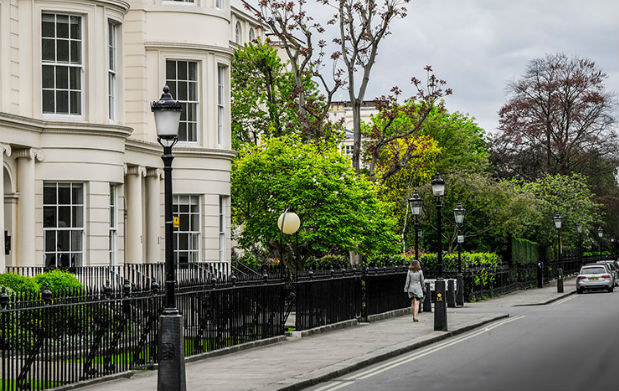London is full of Victorian properties. If you live in a classic terraced home, then you will have the advantage of neighbours on either side of you. However, the biggest heat loss from your home will be via the windows and doors.
Maintaining a seamless home envelope will keep the heat in your home where you want it – inside the house. It can be harder with old, period properties to retain those classic features whilst staying warm and keeping your energy bills as low as possible.
Upgrading the Envelope of your Home
For excellent energy efficiency, your house should have a secure envelope and the weakest point of any home is always the doors and windows.
If you have old period windows and doors, then make sure there are no leaks around the frames. There are simple and effective draught-proofing measures which you can put in place to keep the draughts out and the heat in. Your local DIY store will have a range of options from simple foam inserts which are cheap but will need replacing to metal or plastic strips with draught brushes which offer a more long-term solution.
If you hanker after the benefits of triple glazing but don’t want to lose the charm of period windows, then replace the glass with new lightweight alternatives like Fineo. Fineo offers all the thermal efficiency of triple glazing in a single pane so is perfect for Victorian and sash windows.
Fit thick curtains with a double or thermal lining and make sure your curtains don’t extend beyond the window if there is a radiator underneath. Pulling the curtains at dusk can help keep rooms warmer.
Period features
One great joy of Victorian properties is the fireplaces but if you are not using them then they can act as a vent to the sky and a lot of heat from a room can be lost. Years ago, householders will stuff screwed up newspaper up the chimney to minimise draughts from above and to prevent heat loss. Nowadays, you can buy chimney balloons which are essentially a balloon inflated once it is in the chimney to prevent the movement of air. Available in a variety of different shapes and sizes, just remember to take it out before you light the fire!
Victorian properties tend to have higher ceilings than more contemporary homes. Ceiling fans on a clockwise rotation can help push the hot air back down into the room.
A traditionally laid-out Victorian property will have separate reception rooms on either side of the front door. It’s easier to keep heat where you want it just by closing the doors to each room. If you have chosen not to heat certain rooms because they are not in use then install a draught excluder at the bottom of the door to avoid the passage of cold air into an adjacent warmer room.
Use 21st Century Technology
Modern heating systems have apps which offer precision control from your device plus remote control when you are not at home. They have several advantages compared to more old-fashioned heating timers.
- Control your heating remotely to mirror family routines – if you are late home then you alter the time the heating comes on so you’re not heating an empty house
- Programme the system to turn thermostats down after a certain period of time when there is no activity
- A Smart app will learn your home’s thermal properties including how long it takes a specific room to warm up so that when you set the desired thermostat, the software can work out when the heating needs to come on for a specific room
- Enjoy different temperatures in individual rooms, set your kitchen at a lower temperature because it’s always warmer when you are cooking and lower the thermostat in rooms which are not being used or have less usage – this is called multi-zone control
- Take advantage of data reports which can show you where you use the most energy in your home and when
Final Thoughts
Victorian properties don’t have to be austere and chilly. Follow some good old-fashioned heating tips which your grandparents would be proud of and make the most of modern technology to help you get the best out of your energy spend this winter.








